Contents
- What Travelers Need to Know About Visiting Cozumel Mexico During Sargassum Season
- Understanding Sargassum
- The Arrival of Sargassum in Cozumel
- The Impact of Sargassum on Cozumel’s Marine Life and Beaches
- Cozumel’s Response to Sargassum
- Looking Ahead: Sargassum Forecast and Mitigation Efforts
- Tips for Visitors During Sargassum Season
- Fun Things to Do in Cozumel Off of the Beach
- Finals Thoughts About Sagassum on Cozumel
What Travelers Need to Know About Visiting Cozumel Mexico During Sargassum Season
Are you planning a trip to Cozumel this year? Are you hoping for glorious days spent relaxing on the island’s pristine, white-sand beaches and swimming in its crystal-clear waters?
If you have done any research at all, you have undoubtedly read about the sargassum in Cozumel. The seaweed problem that has plagued the shores of the Yucatan Peninsula and the Caribbean region for the last decade.
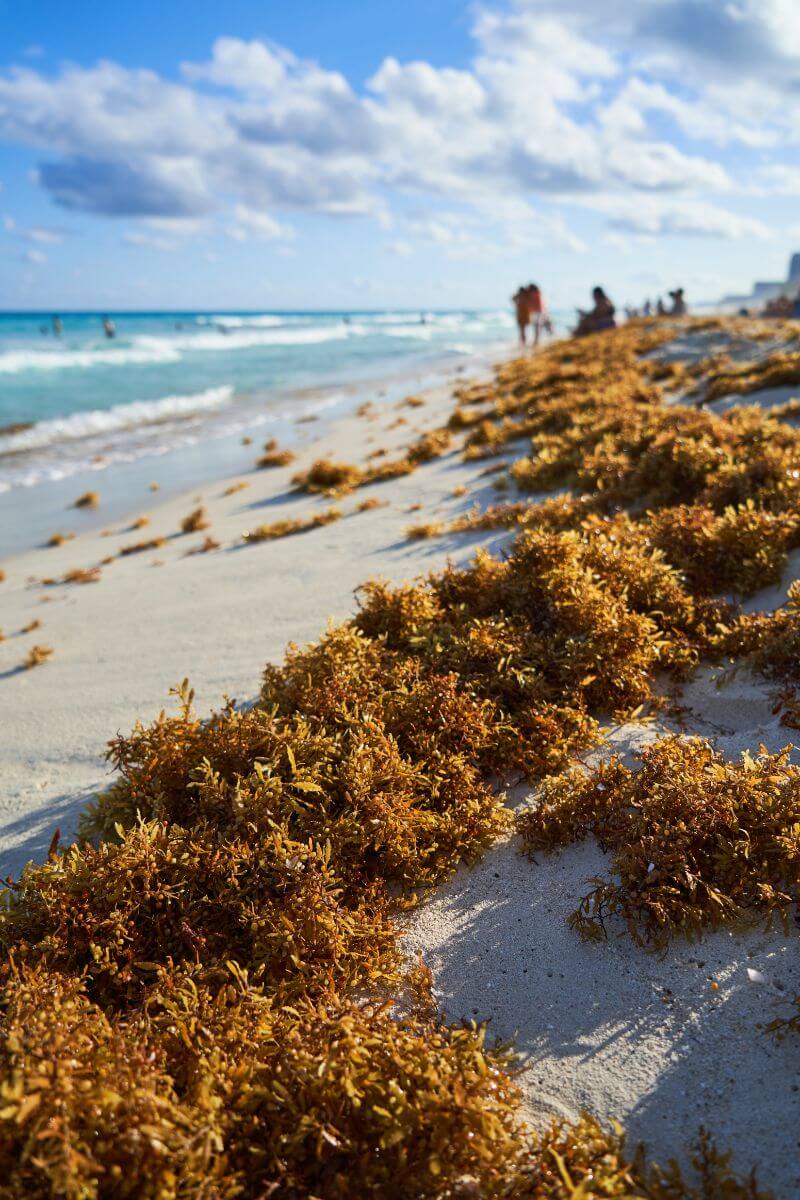
This seaweed, although a natural component of marine ecosystems, has begun accumulating on shores in unnatural and unprecedented volumes. The brown algae detracts from the beauty of the beaches, makes swimming unpleasant and emits a foul-smelling gas as it decomposes, affecting residents and tourists alike.
As the entire Mexican Caribbean, including the islands of Isla Mujeres, Isla Contoy and Cozumel, is almost entirely dependent on tourism, authorities have been forced to confront this environmental challenge: the proliferation of sargassum.
Living in the Riviera Maya for the past two decades has afforded me a front-row seat to the arrival of this seaweed menace. I have also watched the efforts of local and state authorities and private businesses to keep it at bay.
How has Cozumel addressed this ongoing issue? Which areas on Cozumel are least and most affected and how can you plan your trip to avoid this seaweed plague?
Understanding Sargassum
Sargassum, a term that has become increasingly familiar to those of us living near or visiting the Caribbean, refers to a type of brown seaweed comprising numerous species, including the most commonly encountered Sargassum fluitans and Sargassum natans.
This seaweed is not inherently problematic; in fact, in its natural habitat, the Sargasso Sea, it plays a crucial role in the marine ecosystem. The Sargasso Sea, unique for being a sea without shores, is bounded by ocean currents on all sides, creating a vast, floating ecosystem in the middle of the North Atlantic Ocean. Here, the sargassum mass provides habitat, food, and breeding grounds for a wide array of marine life.
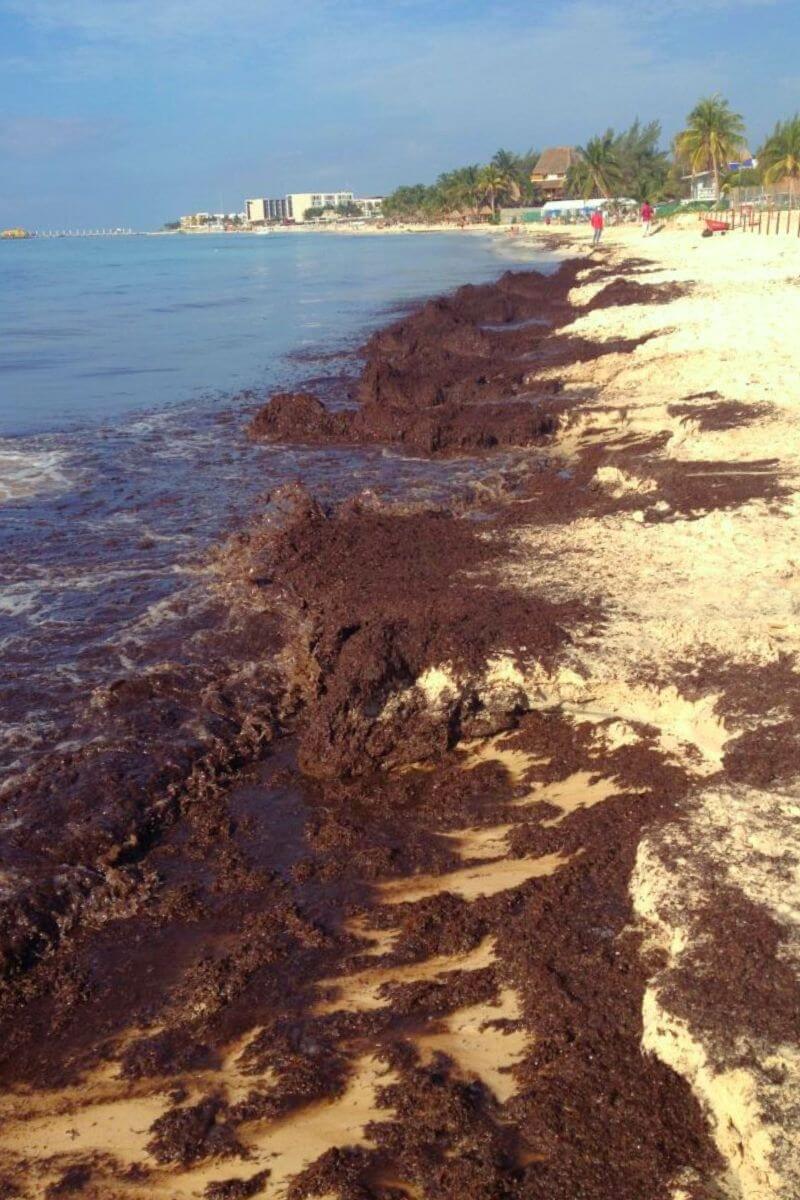
However, the situation changes dramatically when sargassum leaves its native open ocean environment. The phenomenon known as the Great Atlantic Sargassum Belt, a massive seaweed bloom stretching from West Africa to the Gulf of Mexico, has been making headlines for its impact on coastal regions. First identified in satellite images in 2011, this belt has brought unprecedented amounts of sargassum to shores far from its original home.
The reasons behind the increase in sargassum blooms are complex and multifaceted. Scientists point to various factors, including rising sea temperatures and changes in ocean currents, both of which are influenced by climate change.
Additionally, increased nutrient runoff from rivers into the ocean, a result of agricultural and urban development, provides fertilization that sargassum needs to grow beyond its usual bounds. These nutrients, particularly nitrogen and phosphorus, act like a fertilizer for the seaweed, contributing to the blooms that have become so problematic.
Another contributing factor is the alteration of the Amazon River’s flow and nutrient load, which has changed due to deforestation and increased use of fertilizers. These changes in nutrient input into the Atlantic are believed to fuel the growth of sargassum, leading to the massive blooms observed in recent years.
The Arrival of Sargassum in Cozumel
For those of us who’ve called the Riviera Maya home for the last couple of decades, the arrival of sargassum to the shores of our coastal communities is a relatively new challenge. Cozumel, with its postcard-perfect beaches and vibrant underwater life, had remained largely untouched by this seaweed menace until the early 2010s. This was when the Great Atlantic Sargassum Belt began to make its presence felt far beyond its native waters, marking a significant shift in the environmental landscape of the Caribbean and the Gulf of Mexico.
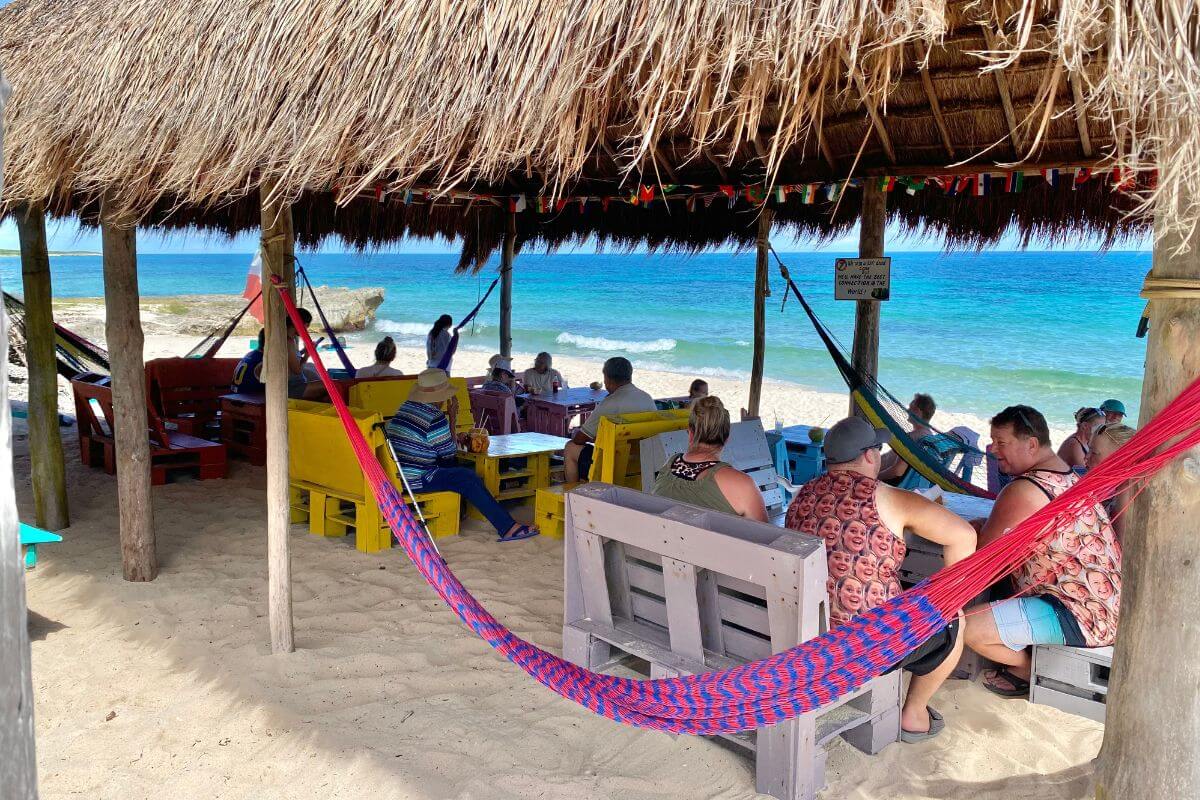
Cozumel’s relative resilience to the sargassum influx is not just a stroke of luck but a geographical advantage. The island is positioned in such a way that the prevailing sea currents and winds, which typically drive the sargassum towards the Caribbean, often bypass Cozumel’s western shores.
This natural barrier has shielded the island from the worst of the sargassum onslaughts that have affected other parts of the Mexican Caribbean. The island’s leeward side, facing away from the main current that carries the sargassum, acts as a shield, preserving the clarity of its waters and the cleanliness of its beaches.
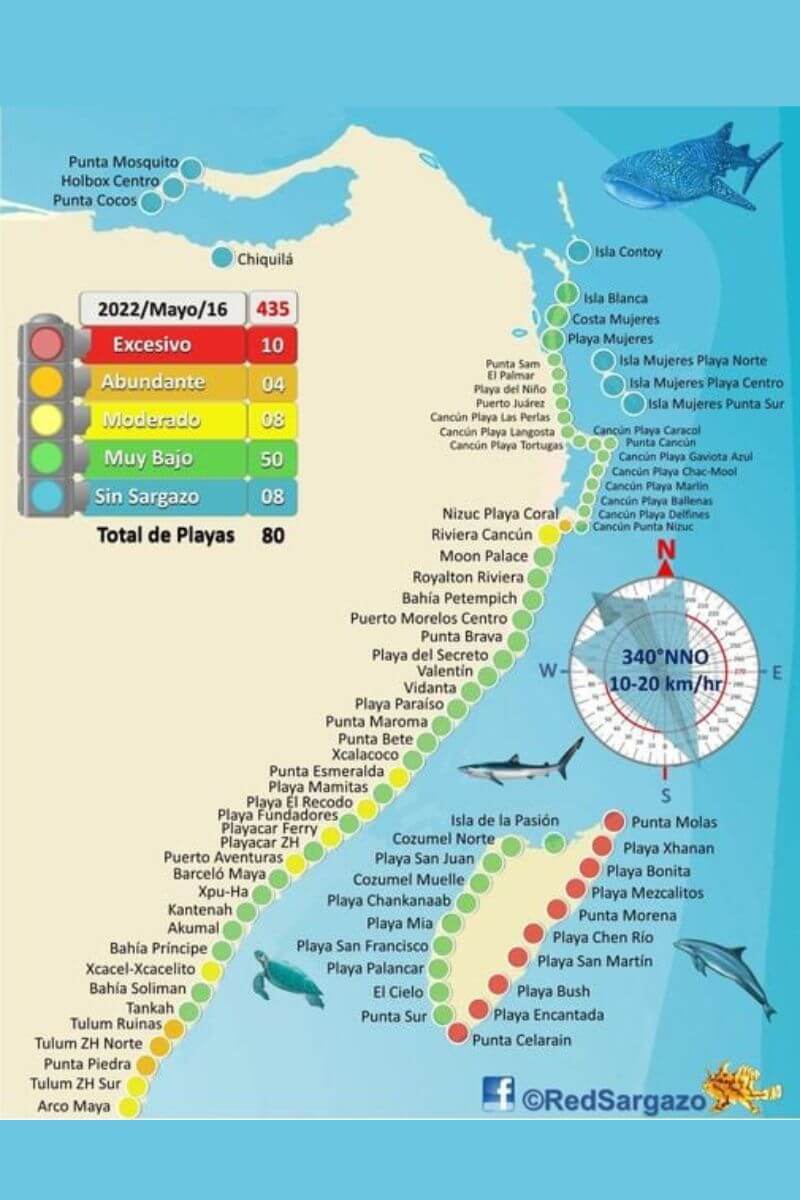
But, Cozumel is not entirely immune to this natural phenomenon. There have been occasions when the seaweed has made its way to our shores, particularly when unusual weather patterns or shifts in ocean currents occur. These instances, though relatively rare, have prompted a swift and coordinated response from both local authorities and the community.
The management of sargassum in Cozumel involves a multi-pronged approach. When sargassum does arrive, teams of workers, often supported by volunteers, spring into action, removing the seaweed from the beaches manually or with the help of machinery.
This labor-intensive process is crucial not only for maintaining the aesthetic appeal of the island’s beaches but also for protecting the marine ecosystem from the potential harm caused by decomposing sargassum.

Cozumel has also invested in preventive measures, such as the installation of sargassum barriers at sea, designed to intercept the seaweed before it reaches the shore. These barriers, along with ongoing monitoring of sargassum movements via satellite imagery, enable the island to stay one step ahead of the challenge.
The Impact of Sargassum on Cozumel’s Marine Life and Beaches
In the global marine ecosystem, sargassum actually plays a pivotal role. In the open sea, sargassum is more than just a mass of undulating seaweed; it’s a floating sanctuary. It’s a drifting habitat, providing shelter, food, and breeding grounds for an astonishing variety of marine life, from tiny fish and invertebrates to endangered sea turtles.
However, when sargassum arrives en masse on the shores of Cozumel, the narrative shifts. The ecological benefits it offers in the open water become overshadowed by the challenges it presents when it accumulates on beaches.
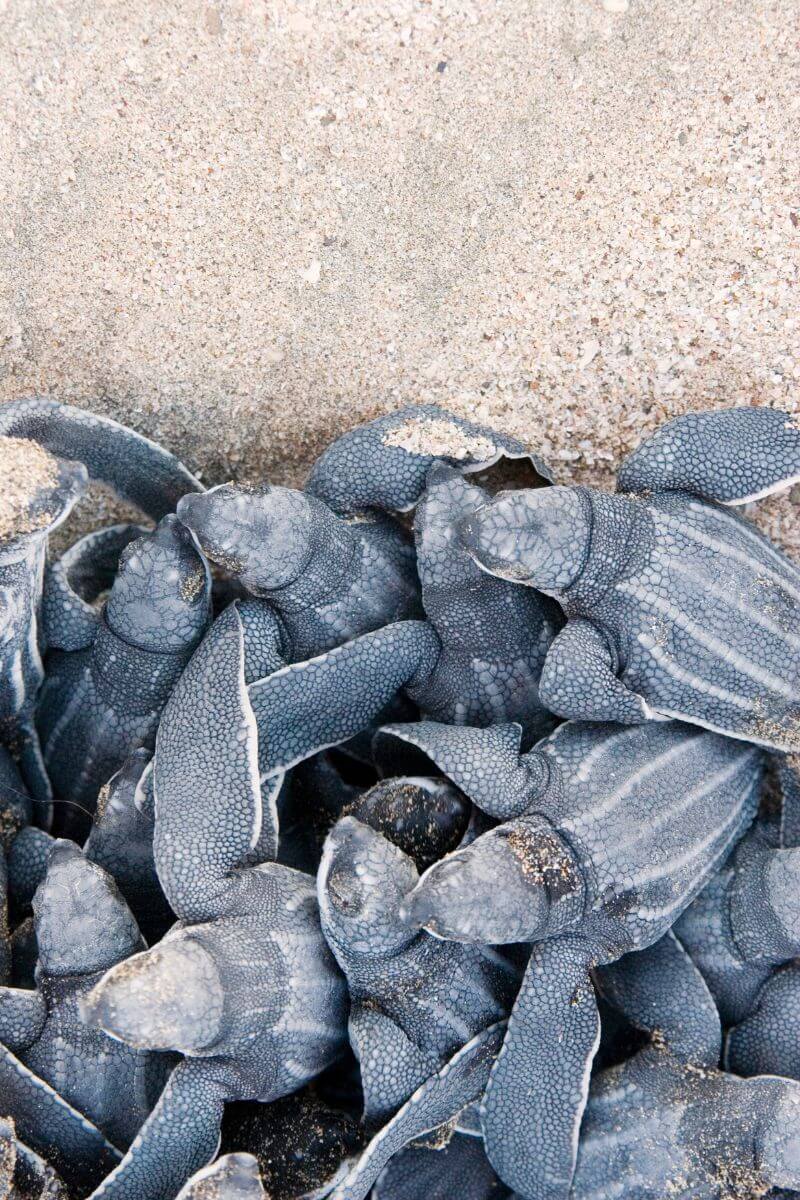
For the marine life around Cozumel, the sudden influx of sargassum can have mixed impacts. While some species find a temporary refuge or a source of food in these floating mats, the decomposing sargassum can deplete oxygen levels in the water near the shore. This poses a threat to small fish and living coral by creating hypoxic conditions that suffocate marine life.
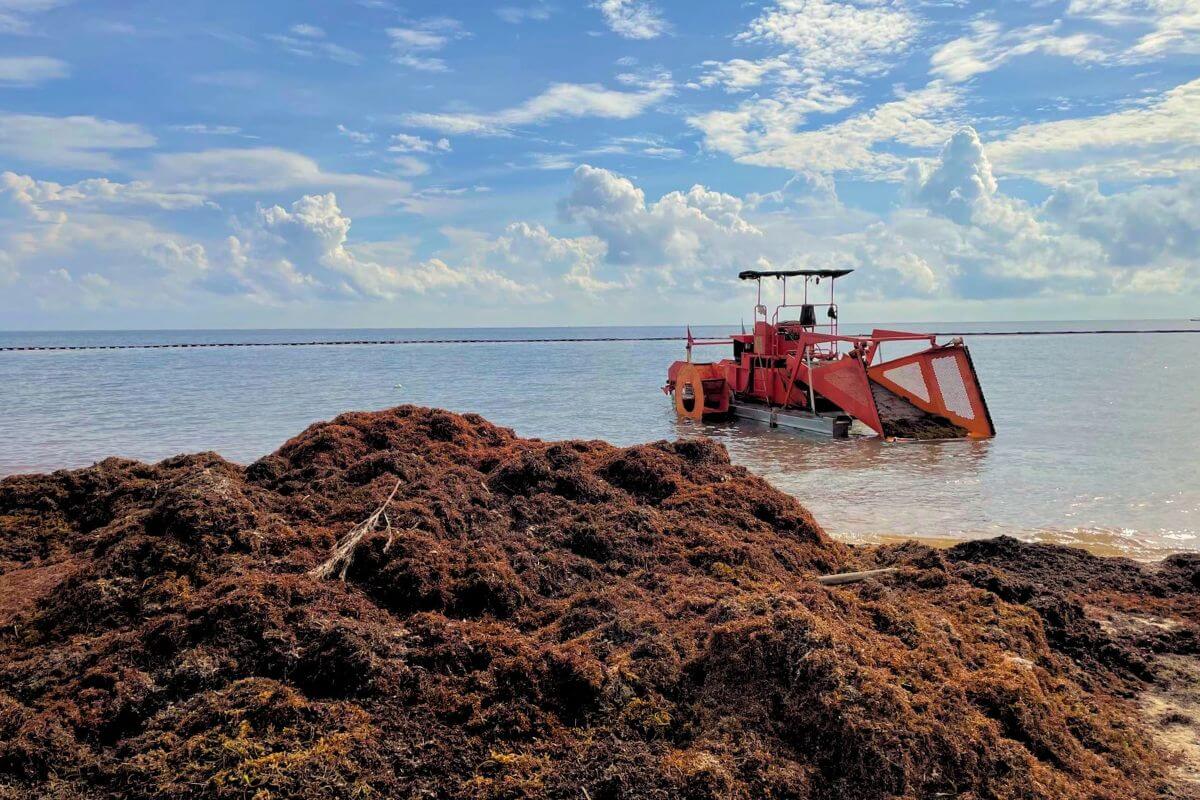
Worse still, the physical barrier created by piles of sargassum along the shore can hinder sea turtles from nesting and hatchlings from reaching the sea, disrupting the life cycles of these ancient creatures.
The beaches of Cozumel, renowned for their beauty and biodiversity, are not immune to the effects of sargassum blooms. The visual impact is immediate and striking; pristine white sands become blanketed in a thick, brown layer of seaweed, detracting from the natural allure that draws visitors from around the world.
Not only does the sargassum seaweed look unappealing, the unpleasant smell of decomposing sargassum, reminiscent of rotten eggs, is due to the release of hydrogen sulfide gas. This can make your dream beach vacation far less appealing.
In response, Cozumel has taken great strides to mitigate the impact of sargassum on its shores and the marine life on its coral reefs. Cleanup efforts are not just about maintaining the aesthetic appeal of the beaches but also about preserving the delicate balance of the island’s marine ecosystems.
Cozumel’s Response to Sargassum
In Cozumel, the response to the sargassum challenge has been both swift and strategic. This highlights a longstanding, community-wide commitment to preserving the island’s natural beauty and tourist appeal.
The strategies employed to manage sargassum are varied, involving a combination of physical barriers, manual cleanup efforts, and the coordinated action of both federal and local agencies.

Sargassum barriers have been a frontline defense against the seaweed’s encroachment. These floating barriers are strategically placed offshore to intercept sargassum before it reaches the beaches. By containing the bulk of the seaweed at sea, these barriers significantly reduce the amount that washes ashore, making the subsequent cleanup efforts more manageable.
Cleanup efforts on the island are both rigorous and regular. Any sargassum that does make it past the barriers is promptly removed. Teams of workers, often supplemented by volunteers, are deployed to affected beaches where they manually collect and remove the seaweed.
This back-breaking work is essential for maintaining the touristic appeal of Cozumel’s beaches for tourists and ensuring that the decomposing sargassum does not adversely affect the delicate marine environment.
The role of federal and local maritime and tourism agencies in Cozumel’s sargassum management efforts cannot be overstated. These agencies coordinate the deployment of barriers, organize cleanup operations, and monitor sargassum movements via satellite imagery to predict and prepare for influxes. Their collaborative efforts ensure a unified and effective response to the sargassum challenge, leveraging resources and expertise to protect Cozumel’s coastal environment.
Looking Ahead: Sargassum Forecast and Mitigation Efforts
The question of sargassum’s long-term impact on Cozumel remains a topic of concern and speculation. Predictions for sargassum influx in the coming years vary, with some scientists warning of potential increases due to climate change and others hopeful that mitigation efforts will start to bear fruit.
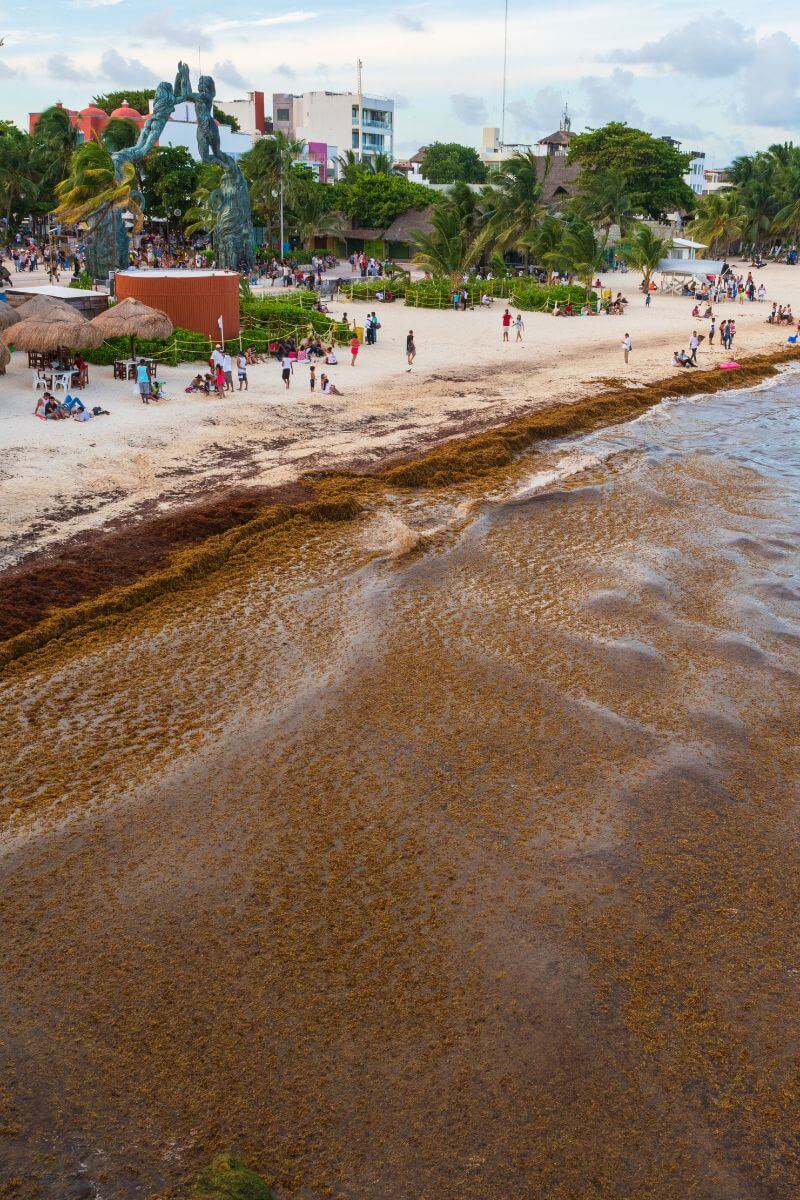
What’s clear is that Cozumel is not sitting idly by. Ongoing research into the lifecycle of sargassum, its movement patterns, and the factors fueling its growth is critical. This research informs the development of innovative mitigation strategies, from improved barrier technologies to biological solutions that may help control sargassum populations at sea.
Tips for Visitors During Sargassum Season
For travelers planning a visit to Cozumel, especially during the sargassum season, being informed is key. Checking current sargassum conditions is easier than ever, thanks to online resources and local updates. Websites and social media platforms provide real-time information on beach conditions, which can help you make informed decisions about where to spend your day.
You can also check our article on the best times to visit Cozumel.
Cozumel Beaches Without Sargassum
Beaches and beach clubs on the south and west side of the island – the wild side – are generally less impacted by sargassum due to their protected positioning from the prevailing sea currents and winds that carry the seaweed.
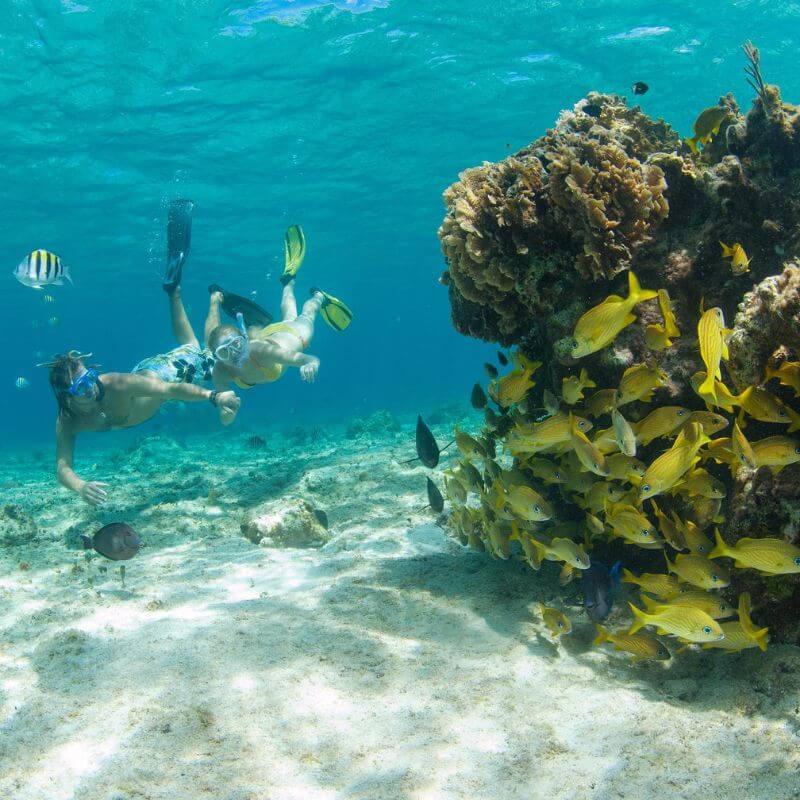
Here are some of the beaches and beach clubs on the west coast of Cozumel that are least likely to be impacted by sargassum:
- Playa Palancar
- Chankanaab Beach Adventure Park
- Paradise Beach
- Playa Mia Grand Beach Park
- Nachi Cocum
- Mr. Sanchos Beach Club
- San Francisco Beach
- The Money Bar Beach Club
- Buccanos Beach Club
Cozumel Beaches that Receive the Most Sargassum
In Cozumel, while the western and southern shores are generally protected and less affected by sargassum due to their geographical positioning, the east side of the island, facing the open Caribbean Sea, is more susceptible to sargassum influxes.
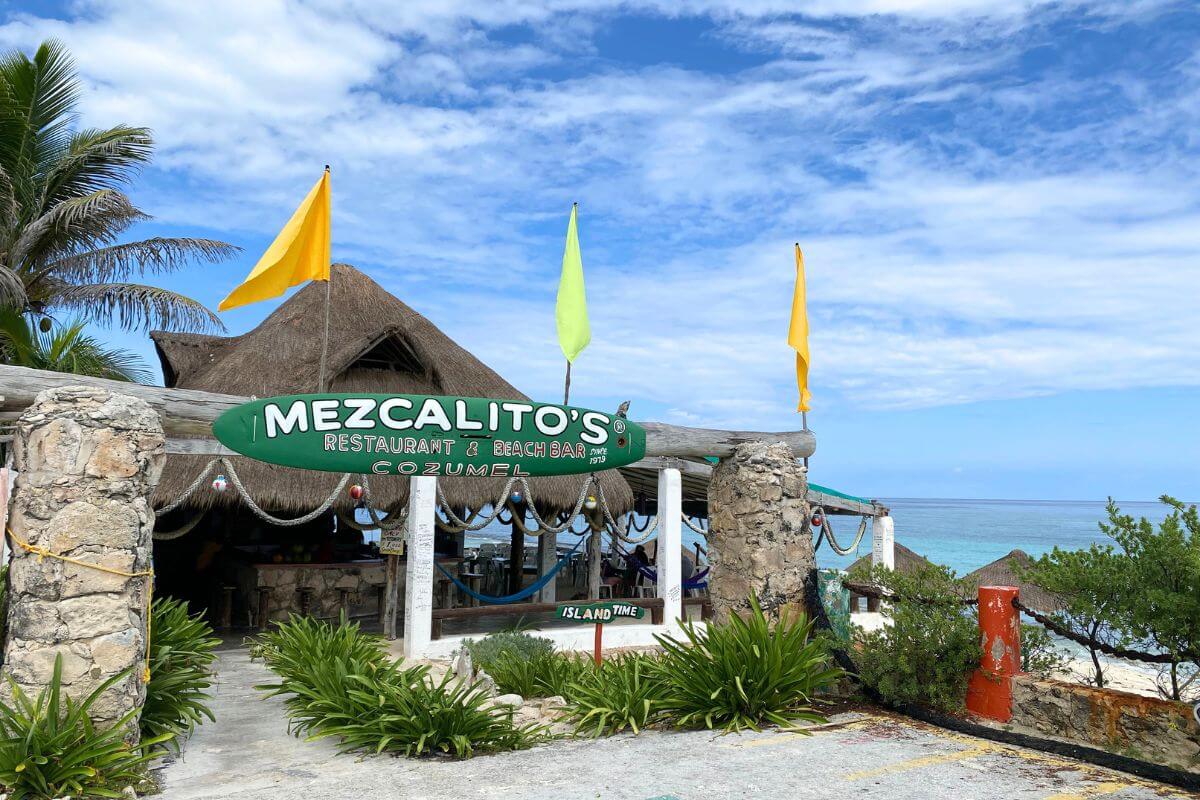
Here are some beaches and popular beach bars on the east side of Cozumel that might be the most negatively impacted by sargassum:
- Playa San Martin
- Playa Chen Rio
- Punta Morena Beach
- Mescalito’s
- Señor Iguanas
- Playa Punta Chiqueros
- Playa Oriente
The amount of sargassum we receive can vary greatly from year to year and even within a single season. This depends on ocean currents, winds, and other environmental factors.
Before visiting any of Cozumel’s beaches and beach clubs, it’s a good idea to check the current conditions or contact the businesses for the latest information on the sargassum situation.
Fun Things to Do in Cozumel Off of the Beach
Beyond its beautiful beaches, Cozumel offers a wealth of activities, from exploring the ancient Mayan ruins to experiencing the local culture in the magical town of San Miguel to diving in the world-renowned Mesoamerican Barrier Reef. So, if the beaches don’t look so inviting, the island has much more to offer you. Here are some suggestions for things to do on Cozumel to avoid the sargassum.
Discover Scuba Diving and Snorkeling at Palancar Reef: Explore the vibrant underwater world of Cozumel’s famous reef, where the clear waters offer a spectacular view of marine life, unaffected by sargassum.

Visit San Gervasio Mayan Ruins: Dive into the rich history of Cozumel by exploring these ancient Mayan ruins, nestled in the heart of the island’s lush jungle.

Take a Submarine Tour with Atlantis Submarines: Experience the depths of the Caribbean Sea in a real submarine, offering a unique perspective of Cozumel’s underwater landscapes and marine creatures.
Enjoy the Cozumel Pearl Farm Tour: Learn about pearl cultivation and sustainable practices at this unique farm located in a secluded area of the island, far from sargassum-affected beaches.
Explore Punta Sur Eco Beach Park: Venture into this National Park to enjoy bird watching, lighthouse views, and crocodile spotting in its lagoon, offering diverse activities away from the beach.
Experience the Island’s Culture in San Miguel: Wander through Cozumel’s main town, San Miguel, where you can enjoy local cuisine, shop for handmade crafts, and immerse yourself in the island’s vibrant culture.

Relax at a Luxury Spa: Treat yourself to a day of relaxation and pampering at one of Cozumel’s top-rated spas, offering a serene escape from the seaweed-laden beaches.
Take a Cooking Class: Learn to prepare traditional Mexican dishes with a local chef, offering a tasty and educational experience that highlights the flavors of the region.
Go Deep Sea Fishing: Charter a boat for a day of fishing in the deep waters around Cozumel, where you can catch marlin, sailfish, and more, far from the sargassum shores.
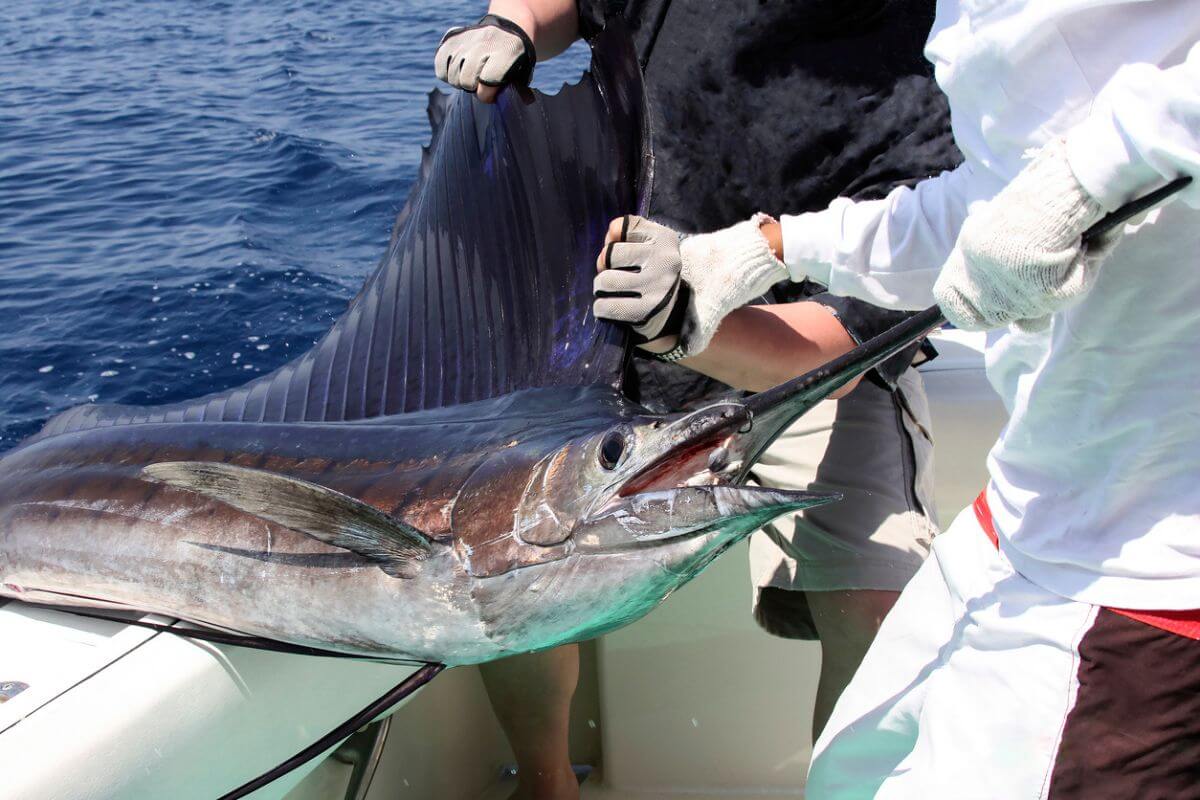
Visit the Cozumel Museum (Museo de Cozumel): Discover the island’s cultural heritage and natural environment through exhibits and artifacts, providing an insightful indoor activity for all ages.
Finals Thoughts About Sagassum on Cozumel
Over the past two decades, we have witnessed Cozumel’s remarkable resilience and proactive stance in the face of the sargassum issue. This island has managed to preserve its natural beauty while the ongoing efforts of the Mexican government to address the sargassum seaweed situation have set a high standard for environmental stewardship.
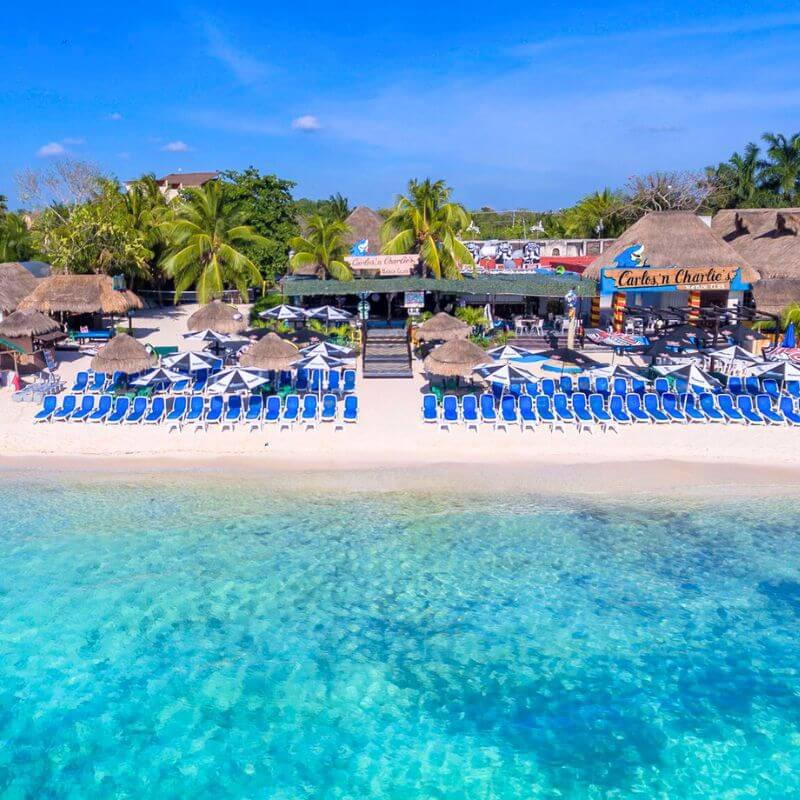
I encourage you to experience Cozumel’s unspoiled beauty firsthand. The presence of sargassum does not mean you cannot enjoy a wonderful vacation on the island. Beyond the beaches, there lies an island rich in culture, history, and natural wonders.
Come discover Cozumel for yourself and join in supporting the island’s conservation efforts. By choosing eco-friendly tours, respecting wildlife, and contributing to local environmental initiatives, you can help ensure that Cozumel remains a paradise for generations to come.

